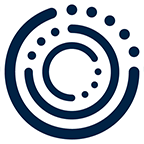How financial services should choose their GRC software?
Selecting the ideal GRC software for financial institutions demands thorough scrutiny. From understanding unique institutional needs to examining vendor credibility, security standards, total costs, and future adaptability, every aspect plays a crucial role.

Grand “Answer”:
Selecting a GRC software for financial services begins with understanding your regulatory requirements and business goals[1]. Look for solutions that offer real-time monitoring, easy integration, scalability, and customizable reporting[2]. It's crucial to choose a vendor with a solid reputation, financial industry experience, and strong post-purchase support[1]. Security should be top-notch with strong encryption and regular updates. Always factor in not just the purchase cost but also the expenses for implementation, training, and maintenance[1]. Before finalizing, opt for a live demo, understand the contract's terms, and ensure there's a clear avenue for updates and feedback. Choose with care, balancing your needs and future considerations.[2]
Source
[1]

[2]

GRC Software Platforms Main Roles
Enterprise Risk Management (ERM) Platforms: The foundational concept of ERM is its adeptness at interlinking overarching strategy with potential risks. When we dive deep into the structural fabric of ERM, we unearth its holistic capability of establishing a harmonized language for risk. It’s not just about pinpointing risks but also analyzing their potential impacts, gauging their probability, and strategizing actionable responses. Think of it as navigating a colossal ship through tumultuous waters. Key Risk Indicators (KRIs) can be likened to the radar system. They are constantly scanning the environment, processing myriad data to detect impending dangers. But it's the integration of this detection with an actionable response that makes the difference. Like a seasoned captain who not only identifies the stormy patches but also knows when to change course or speed up to evade them.
Compliance Management Platforms: In today's global economy, organizations find themselves ensnared in a vast and complex web of regulations, both external and internal. The dynamic nature of these regulations, influenced by geopolitical shifts, technological advancements, and societal demands, make it imperative for organizations to be agile. Compliance platforms are thus not mere tools; they are dynamic frameworks that ensure organizations remain within the bounds of legality while also being adaptable. Imagine playing a board game where the rules constantly change. Instead of sifting through pages of an ever-expanding rulebook, a compliance platform offers real-time updates, reminding players of new rules, and even predicting future changes based on patterns.
IT Governance Platforms: The digital age has transformed the role of IT from a support function to a strategic partner. With this shift comes the enormous responsibility of aligning IT processes with broader business goals. But IT governance platforms go beyond this alignment. They are designed to navigate the intricacies of IT operations, from managing the lifecycle of applications to ensuring the security of data and balancing the rapid pace of technological innovation with the rigid structure of compliance. Drawing an analogy with automobiles, think of IT governance as the perfect harmony between the accelerator and the brake. While innovation urges the organization to speed up, compliance reminds it of speed limits, ensuring a smooth, safe journey.

GRC Software: The Steps to Follow for Financial Institutions
A comprehensive GRC tool transcends the silos of risk, compliance, and governance. Instead, it weaves them into a cohesive tapestry, where each thread, while maintaining its individuality, contributes to a larger narrative. What sets a trailblazing GRC tool apart is not its capacity to simply monitor or document but to interconnect. It fosters an environment where information flows seamlessly, where insights derived from one domain can be readily applied to another, and where decision-makers are armed with a holistic view, aiding in strategic alignment.
1. Understand Your Needs
A clear and profound understanding of an institution's unique needs stands at the crux of a successful GRC initiative. The world of finance is not homogenous; there are vast differences in the operational scales, regulatory requirements, and customer expectations of various institutions. A multinational bank, for instance, faces challenges that might be worlds apart from those encountered by a regional credit union.
To illustrate the importance of understanding one's needs, consider a real-life scenario: A retail bank, primarily serving urban clientele, might prioritize digital security due to an influx of online transactions. Conversely, a rural bank, serving an older demographic, might prioritize traditional compliance areas, given its customers' preference for in-person transactions.
To truly comprehend these needs, institutions might employ varied methods, ranging from surveys and feedback mechanisms to data-driven insights gleaned from operational metrics. Techniques such as the SWOT (Strengths, Weaknesses, Opportunities, and Threats) analysis can prove invaluable in this introspection phase. The key here is not just understanding but accurately translating these needs into actionable GRC requirements.
2. Prioritize Features
GRC solutions today are often multifaceted, equipped with an array of features meant to cater to diverse institutional needs. However, the adage, "one size fits all," seldom holds true in the realm of GRC. For instance, while one institution might find solace in a GRC tool's advanced machine learning-driven risk prediction module, another might prioritize a tool's capability to seamlessly integrate with legacy systems.
Consider the narrative of two contrasting banks: Bank A, a digitally native neobank, built from the ground up in the age of cloud computing, might be in pursuit of a GRC tool that offers mobile-first compliance reporting. On the other hand, Bank B, with its operations deeply entrenched in legacy mainframes, might prioritize a tool's capability to communicate with older systems without the need for extensive overhauls.
Features, thus, cannot be viewed in isolation; they need to be assessed in tandem with the institution's operational fabric. Real-time monitoring, customizable reporting, user experience, scalability – each feature should be judged not just by its inherent capability, but by its relevance and applicability to the institution in question.
3. Research Vendors
The vendor landscape for GRC solutions is as varied as the features they offer. Therefore, a meticulous approach to vendor selection becomes indispensable. One might be reminded of the many IT projects that have gone awry, not due to technical inadequacies, but because of a misalignment between vendor promises and actual delivery.
In the journey of vendor selection, reputation matters immensely. It is one thing for a vendor to flaunt an impressive feature list, but the real-world efficacy of these features is what truly counts. Case studies, customer testimonials, third-party reviews – these are the markers of a vendor's true capabilities. Moreover, the history of a vendor, in terms of its longevity and stability in the market, can often shed light on its credibility and reliability.
However, beyond the software and its features, the human aspect of vendor relationships is paramount. This encompasses the post-sale support ecosystem, the responsiveness of the vendor team to queries or challenges, and the general ethos with which they approach client relationships. For instance, a vendor with dedicated account managers or 24/7 helplines signifies a commitment to seamless client experiences.
4. Evaluate Security
In our present digital era, the significance of robust security measures cannot be overstated. The financial industry, in particular, has become a prime target for cyber-attacks, given the value and sensitivity of the data they handle. Data breaches can result in catastrophic financial losses, not to mention the irreparable damage to an institution's reputation.
Consider the example of a renowned bank that faced a massive data breach, leading to the leakage of millions of customer data points. Not only did this lead to immediate financial repercussions, but the subsequent loss of trust among its customer base was even more damaging in the long run.
Hence, when evaluating a GRC software solution, it's crucial to assess its encryption standards, ensuring data at rest and in transit is protected. Access controls, such as multi-factor authentication and role-based access, prevent unauthorized personnel from gaining entry to sensitive areas of the software. Additionally, the software should be maintained with regular updates, patching vulnerabilities that could be exploited by malicious entities. Furthermore, third-party audits of the software serve as a validation of its security protocols, providing an additional layer of assurance.
5. Consider Total Cost of Ownership (TCO)
While the initial price of a GRC software solution is an essential consideration, it is merely the tip of the financial iceberg. The total cost of ownership is a more comprehensive metric, encompassing not only the upfront costs but also the expenses incurred over the software's life cycle.
For instance, while Software A might have a lower initial purchase price than Software B, the former might require more frequent and costly updates, or it might be incompatible with existing systems, necessitating additional integration costs. Then there's the expense related to training personnel to use the software effectively.
Moreover, indirect costs, such as potential downtimes or inefficiencies arising from a poorly optimized solution, can escalate the TCO. A holistic view of these costs allows institutions to make informed, long-term decisions about their GRC investments.
6. Take a Test Drive
Imagine buying a car based solely on its specifications without ever taking it for a test drive. The same principle applies to GRC software. Demos and pilot tests are not just a mere formality; they provide a tangible feel of the software in action.
Demos allow institutions to visualize the user interface, assess the intuitiveness of the software, and gauge its features firsthand. Pilot tests, on the other hand, are more in-depth. By running the software in a controlled environment, financial institutions can identify potential challenges or areas of improvement.
Such trials often reveal insights that might not be evident in promotional materials. For example, a feature that seems promising in theory might be cumbersome or less efficient in practice. Test drives offer a chance to preempt these challenges, ensuring the chosen solution aligns well with the institution's operational landscape.
7. Review Implementation and Training
Acquiring a GRC software solution is just the beginning; its real value is derived from its effective implementation and the proficiency with which it's used. Smooth implementation involves not just installing the software but integrating it seamlessly with existing systems, ensuring data flow and functionalities remain unhindered.
Training is equally, if not more, critical. A powerful GRC tool, when used sub-optimally, can yield sub-par results. Institutions must invest in comprehensive training programs, ensuring users are well-acquainted with the software's features and best practices. This might involve hands-on training sessions, webinars, or even on-site workshops.
Consider a scenario where a GRC software has an advanced risk prediction module. Without adequate training, users might either underutilize this feature or misinterpret the data, leading to flawed strategic decisions.
8. Feedback Loop
Feedback isn't just a byproduct of software deployment; it's an essential tool for continuous improvement. A robust feedback mechanism ensures that GRC software adapts to the changing needs of the financial institution and addresses any unforeseen challenges.
In the context of GRC software, feedback might arise from various sources: frontline users identifying bugs or inefficiencies, management recognizing a need for additional functionalities, or IT staff noting integration challenges. For instance, a user might find that generating a particular compliance report takes an inordinate amount of time due to cumbersome data extraction processes. Such feedback is invaluable for software refinement.
However, feedback is only as useful as the action it prompts. A dialogue between users and vendors is vital. This dialogue ensures that feedback translates into tangible software updates or revisions, further aligning the software with institutional needs.
9. Customer Support and Community Engagement
GRC software, with its myriad of functionalities, can be complex. As such, robust customer support is paramount to address queries, troubleshoot issues, or guide users through challenging operations. But customer support isn't just reactive; it's proactive. Proactive support might involve periodic check-ins, sharing best practices, or alerting users to new updates or features.
Community engagement elevates the support experience. User communities, forums, or groups can be a goldmine of insights. They allow users from different institutions to share their experiences, challenges, and solutions, enriching the collective knowledge pool. For example, a financial institution might share its custom risk assessment framework in a community forum, benefiting other institutions seeking similar solutions
10. Review Contracts
Contracts, being the legal backbone of any significant financial transaction, deserve careful scrutiny. While price points, deliverables, and deadlines are fundamental, nuances in terms and conditions can have substantial implications.
Consider, for instance, a clause on data ownership. If not carefully worded, an institution might inadvertently give the vendor undue access to sensitive data, risking confidentiality breaches. Another example could be the termination clauses. What happens if either party wishes to exit the agreement prematurely? Are there penalties? Does the institution retain access to its data?
Moreover, look for clauses regarding software updates. How frequently will the software be updated? Who bears the cost? Addressing these and other contractual nuances ensures transparency and fairness in the engagement, protecting both parties' interests.
11. Product Scope, Strategy, and Vision
In the fast-paced world of finance, today's solutions might be obsolete tomorrow. As such, a forward-looking approach is vital when selecting a GRC solution. Beyond immediate needs, institutions should consider the software's adaptability to future challenges and regulatory changes.
Engaging with the vendor to understand their vision for the product is enlightening. Are they committed to continuous innovation? Do they anticipate industry shifts and plan their product roadmap accordingly? For example, as AI and machine learning make further inroads into the financial sector, does the GRC solution plan to integrate such technologies for enhanced risk assessment or predictive analytics?
A vendor's adaptability and commitment to future-proofing their solution can be a significant determinant in the software's long-term viability and relevance.
In conclusion, selecting the perfect GRC software for a financial institution is a multifaceted process, akin to orchestrating a symphony. Each of the considerations, from understanding needs to assessing the product's future scope, plays a vital role in ensuring the software resonates harmoniously with the institution's goals, challenges, and aspirations.
Grand Answer: Your AI Partner
Designed to support compliance officers, legal counsels, and other professionals responsible for adhering to regulatory standards, Grand Answer aims to facilitate an efficient and straightforward compliance process.
Reduce your
compliance risks



